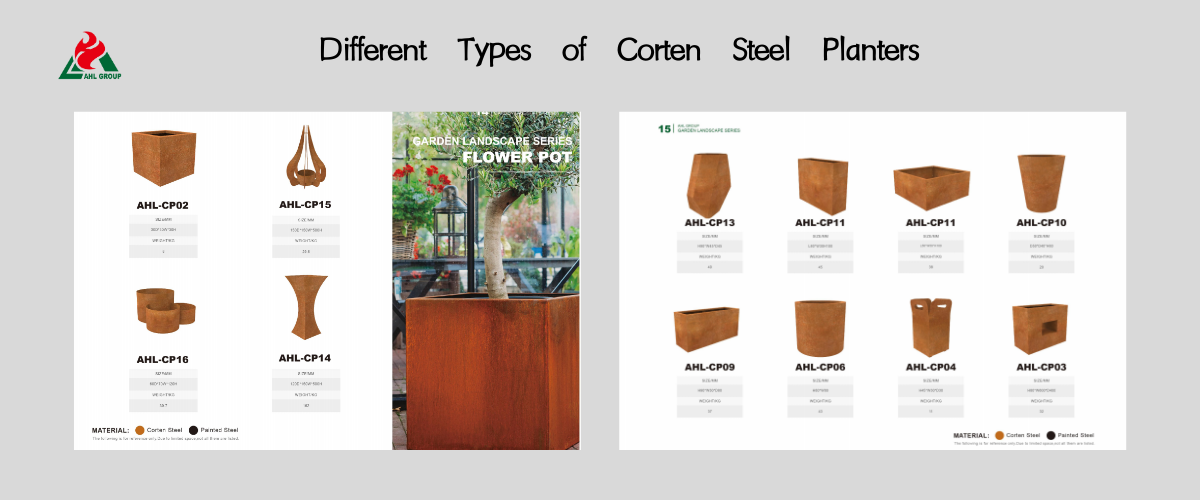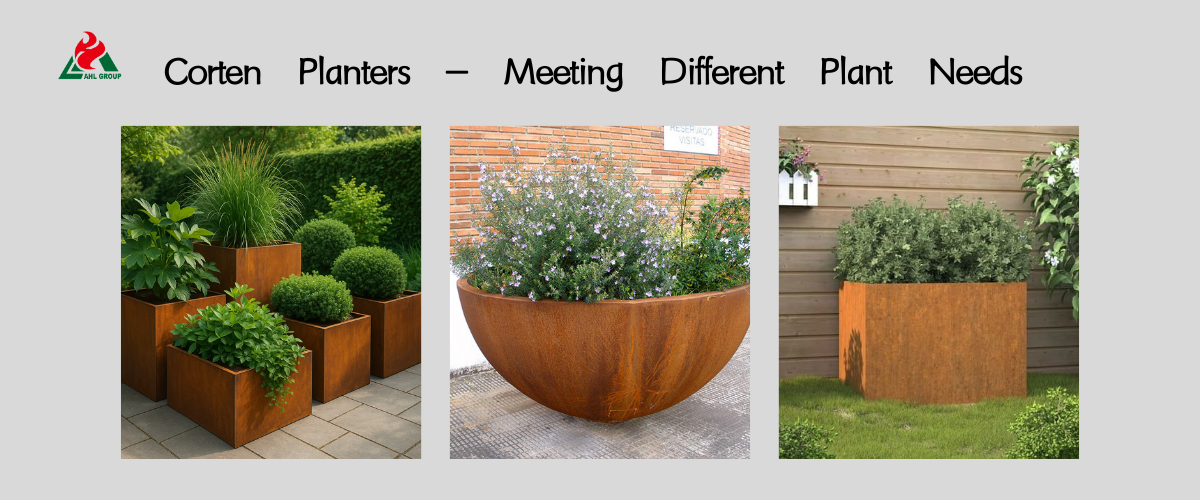In contemporary landscape design, Corten steel planters serve as more than mere containers; they are pieces of sculpture that brighten any outdoor space. However, a crucial question frequently emerges: Do Corten Steel Planters Require Drainage Holes?
Our response is straightforward: Yes. Drainage holes play a vital role in plant health. This article will explain their necessity and the proper method for creating them.
.png)
Our response is straightforward: Yes. Drainage holes play a vital role in plant health. This article will explain their necessity and the proper method for creating them.
.png)
1. Why Choose Corten Steel Planter?
Selecting a Corten steel planter is a wise choice that perfectly matches aesthetics with practicality.
• Exceptional Durability: Corten steel is a distinctive alloy that creates a stable protective coating of rust. This patina acts as a natural corrosion-resistant layer, ensuring your metal planter will endure for decades in all weather conditions, whether you choose the larger AHL-CP13 model or the smaller AHL-CP06.
• Distinctive Aesthetics: Corten steel's characteristic rusty red hue creates a contrasting effect with greenery, adding an artistic flavor to any garden. This rich, earthy colour complements both contemporary designs and traditional features, making it a visual focal point.
• Eco-Friendly and Sustainable: Corten steel is a totally recyclable material, in keeping with modern sustainability and eco-conscious design objectives.
2. The Absolute Necessity of Drainage
Water drainage holes are essential for plant health. Without them, plants and their root systems are at risk.
• Preventing Waterlogging: Due to the absence of drainage systems, excess moisture may accumulate at the base of plant pots, leading to waterlogging. This suffocates the roots, preventing them from absorbing the oxygen essential for survival.
• Preventing Root Rot: Waterlogged soil creates an ideal breeding ground for harmful bacteria and fungi that cause root rot. If the roots rot, they cannot uptake water and nutrients, ultimately dying off.
• Maintaining Soil Aeration: Proper drainage enables water to penetrate the soil, washing away excess salts and delivering fresh air. This gives plant roots a healthy environment in which to grow.
3. How to Design Drainage Holes for Corten Steel Planters?
If your Corten steel outdoor planter lacks drainage holes, you can simply add them or use other methods.
• Position and Quantity: Distribute drainage holes evenly across the surface of the pottery. Larger rectangular planters (such as model AHL-CP11) require multiple holes to ensure uniform drainage.
• Hole Size: The ideal hole size would be a few millimetres to one centimetre. Holes can be covered with mesh or small pebbles to protect against soil being blown away.
• Aesthetic Balance: Because the holes are located at the base, they will not affect the appearance of the garden planters. Placing a spacer or soleplate beneath the planters will prevent leakage and patches of rust when the planters are first exposed to wind and rain.

4. Meeting Different Plant Needs
• Drought-tolerant Plants: Succulents and centaurs want a well-draining sand mixture to prevent root rot.
• Moisture-loving Plants: These plants need good drainage to avoid waterlogging. The most important point is to adapt the drainage system to the watering schedule.
• Ornamental Plants: Depending on the Corten planter size and plant variety, adjust the number and size of drainage holes to make sure the soil maintains optimal humidity.
5. Conclusion: Transform Your Patio with the Modern Charm of Corten Steel Planters
Corten planters are a wonderful complement to any outdoor space, but drainage holes are imperative for healthy plant growth. Paying attention to this aspect will enable you to cultivate a lively, lush garden that retains its beauty for years to come.
Create a cohesive outdoor environment by matching Corten steel garden planters with other products from the AHL Group. Corten steel screens with distinctive patterns (such as AHL-SP30 or AHL-SP33) form striking feature walls; combine with Corten steel fire pits (like AHL-FP15) to add warmth; or incorporate Corten steel water features to complete an elegant design scheme.

6. FAQs About Drainage Holes of Corten Planters
Q: What Should I Do If the Pot Lacks Drainage Holes?
You can punch holes yourself or use the "pot-in-pot" method: place a small plastic planter with drainage holes inside the Corten steel planter.
Q: Are the Drainage Holes Blocked?
Mesh or fine gravel can be placed over the holes before filling with soil to prevent blockage.
Q: Will Rust Stains Soil the Floor?
In the early stages of corrosion, rust spots may appear. It is advisable to use a planter mat or position the Corten planter on a washable surface. Once the outer layer stabilises, the rust spots will naturally fade.


